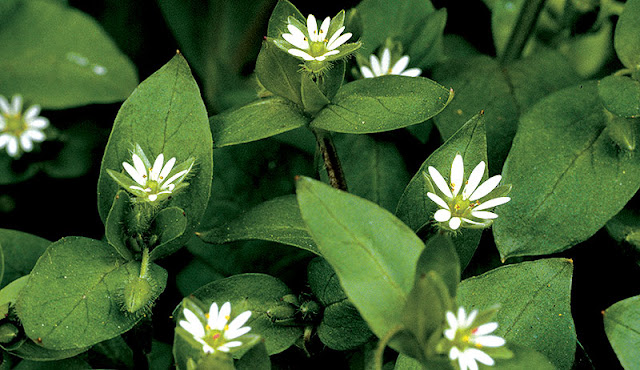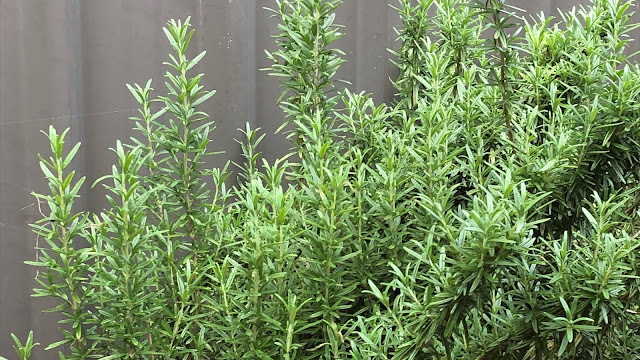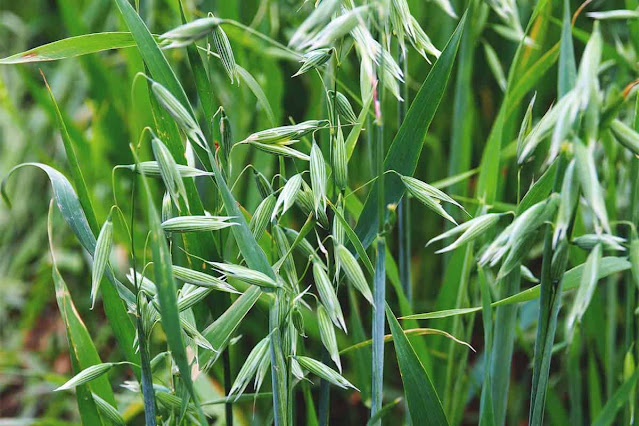Itching can result from various skin conditions, but dry skin is the most common culprit. Fortunately, nature provides us with several natural herbs that have properties to alleviate itchy skin.
In this article, we share our top four herbs for soothing itchy skin,
along with a simple recipe for creating a mild and calming cream suitable for
sensitive, dry skin.
To harness the powerful benefits of some suggested herbs, harvesting and extracting their properties is necessary. If you're new to preparing herbs for skincare, check out these posts for guidance as you embark on the wonderful journey of using natural herbs.
1. Tite Pati (Artemisia vulgaris)
Tite Pati, scientifically known as Artemisia vulgaris, is a herb with potential health benefits for itchy skin. The plant is rich in compounds with anti-inflammatory and anti-itch properties, such as sesquiterpene lactones and flavonoids. These components may help alleviate itching by reducing inflammation and soothing irritated skin. Tite Pati also possesses antimicrobial properties that can be beneficial for addressing underlying skin conditions contributing to itchiness. While it is often used in traditional medicine for various skin issues, it's essential to note that individual responses may vary, and consulting with a healthcare professional before using Tite Pati or any herbal remedy for persistent skin concerns is advisable.
2. Pudina (MENTHA PIPERITA)
Soothing itchy skin can be done by cooling it, and one way to achieve this is by using peppermint essential oil. Menthol, a compound in peppermint oil, has a cooling effect on the skin. To alleviate itchiness, you can incorporate peppermint essential oil into your skincare routine. It's recommended not to exceed 1% in facial products and 2% in body products. Keep in mind that the oil's scent is strong, so you may need less than the suggested limits. Avoid measuring essential oils in drops and consider good manufacturing practices, including reading about the 8 Points You Must Know Before Making Homemade Skincare.
3. Armale jhar (STELLARIA MEDIA)
Itchy skin can find relief with the use of chickweed, a plant that grows
on every continent except Antarctica and blooms almost all year round. While
not very popular in skincare due to its preference for fresh use, chickweed
requires a bit of effort to gather and process. Despite this, it is a valuable
addition to the list of herbs known for soothing itchy skin.
Chickweed is particularly effective for extreme itchiness caused by
irritation and allergies. Its demulcants create a moisturizing film that helps
soothe and protect the skin, and the saponins in chickweed further alleviate
the itch.
Extracting the soothing compounds from chickweed is easy and can be done through a glycerite or alcohol tincture. To learn more about chickweed tinctures, refer to our guide on choosing the best herbal solvent.
4. Sisno (URTICA DIOICA)
Itchy skin can find relief with the help of medicinal plants, such as
Stinging Nettle. While Stinging Nettle is commonly known for its internal
cleansing properties, it also proves beneficial for external use in soothing
itchy skin.
To incorporate Stinging Nettle into skincare, consider using oil macerations, ensuring that the botanical material is thoroughly dry before the process. Another option is to add nettle powder to your skincare products, a technique detailed in our guide on creating a Natural Foot Mask for lazy Sunday mornings.
5. CALENDULA (CALENDULA OFFICINALIS)
Medicinal plants are often used to treat itchy skin, and calendula is a well-known remedy with antibacterial, antiviral, and antifungal properties. It has been traditionally used to heal wounds and is known for its soothing effects on the skin. Calendula was previously used in macerated oil or poultice form, but nowadays, CO2 extracts are gaining popularity as natural ingredients in skincare. Having discussed four selected herbs, we can now proceed to create a calming emulsion.
6. Damini Flower( Matricaria
chamomilla)
Chamomile, a plant related to daisies, is known for its ability to relieve various skin issues like inflammation, irritation, and wounds. To benefit from its healing properties, it is recommended to apply a cream or ointment containing chamomile to the affected areas. Research has shown that creams with chamomile extract are more effective in treating itching, redness, and peeling in eczema patients compared to hydrocortisone cream. In a study involving 161 eczema patients, the chamomile extract cream proved equally effective as steroidal cream and more effective than non-steroidal cream.
7. Rosemary
Rosemary is a plant with green, needle-shaped leaves that stays alive throughout the year. People often use it because it smells nice and adds flavor to food, but it's also good for itchy skin, like eczema. Rosemary has things in it that can clean your skin and help make redness and scaling go away.
8 . Aloe vera
Aloe vera is a plant without a stem that can help with itchy skin. It has a gel inside its leaves that can heal wounds, moisturize the skin, and reduce inflammation. You can put the gel directly on the itchy areas or use products with aloe extracts. People who use aloe often say it helps with dryness and scaling on their skin.
9. Oats
Oats are really good for itchy skin because they have special properties that can help. They can reduce inflammation, fight against irritation, and also have antioxidants. Researchers have discovered that oats are great for fixing the skin barrier and can make symptoms of eczema go down.
10. Comfrey Root ( Symphyti radix )
Comfrey root is often used to treat skin inflammation and leg ulcers. However, it's important to note that using it internally is not recommended due to the presence of pyrrolizidine alkaloids, which have been found to have harmful effects in rats such as liver toxicity, carcinogenicity, and mutagenicity. To ensure safe use, it is advisable to limit external application of comfrey to phytopharmaceutical products with regulated pyrrolizidine alkaloid levels. It is suggested to use comfrey externally for no more than 4-6 weeks per year, with a daily application containing a pyrrolizidine alkaloid content ranging from 10 µg to 100 µg.
11. Haledo (Curcuma caesia)
Haledo, scientifically known as Curcuma caesia, is believed to offer
potential health benefits for itchy skin. This plant, commonly referred to as
black turmeric, contains active compounds such as curcumin, which possesses
anti-inflammatory and antioxidant properties. These properties may contribute
to alleviating skin irritation and itching by reducing inflammation and
neutralizing free radicals. Additionally, Haledo is traditionally used in
certain folk medicine practices for its potential skin-soothing effects. While
more scientific research is needed to fully understand and validate the
specific mechanisms and effectiveness of Haledo for itchy skin, its
anti-inflammatory and antioxidant properties suggest that it could be a natural
remedy worth exploring for individuals experiencing skin discomfort. As with
any herbal remedy, it's important to consult with a healthcare professional
before incorporating it into one's healthcare routine, especially if there are
underlying health conditions or potential interactions with other medications.
Some Other plants to treat itching problem of skin are as following
Peppermint (Mentha x piperita):
Crush fresh leaves and apply on the itchy area.
Wash wounds with an infusion of 3 tablespoons of dried peppermint in a
liter of water.
Use gauze soaked in diluted peppermint essential oil for washing wounds.
Rice (Oryza sativa):
Crush and apply dry rice starch for its anti-inflammatory and absorbing
properties.
Use rice powder from pharmacies or herbalist shops on diaper rash.
Raspberry (Rubus idaeus):
Wash affected area with a decoction of 5 tablespoons of dried leaves per
liter of water.
Pomegranate (Punica granatum):
Use a decoction of three tablespoons of dried bark per liter of water to
treat skin diseases.
Pennyroyal (Mentha pulegium):
Apply liquid from a decoction of 3 tablespoons in a liter of water on
the skin for relief.
Lavender (Lavandula officinalis, Lavandula latifolia):
Wash affected area with liquid from a 10-minute infusion of a spoonful
of dried flowers per cup of water.
Restharrow (Ononis spinosa):
Make an infusion with a teaspoon of dried root per cup of water, take
two or three cups a day.
Use liquid from the infusion of one teaspoon of dried flowers per cup of
water to reduce itchy rashes.
Holm Oak (Quercus ilex):
Apply compresses with the liquid from the decoction of 4 tablespoons of
dried bark per liter of water.
Alfalfa (Medicago sativa):
Grind seeds, mix with water, and apply as a poultice on insect bites to
reduce swelling and itching.
Marshmallow (Althaea officinalis):
Make a decoction of a handful of dried plant per liter of water and
apply on the affected area.


.jpg)
.jpeg)
.jpg)
.jpg)
.jpg)
.jpg)




.jpg)























